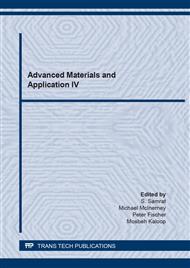p.111
p.117
p.123
p.131
p.139
p.145
p.151
p.157
p.165
Compressive Strength of Ultra High Performance Concrete (UHPC) Containing Palm Oil Mill Effluent (POME)
Abstract:
This study provides the opening on the needs to save the Earth in the aspect of construction industry by limiting the usage of resources the Earth provided such as rocks and aggregates and instead, maximizing the use of wastage in concrete design. Meanwhile, palm oil industry is the biggest commercial industry in Malaysia. This eventually leads to contributing the highest wastage produced in Malaysia such as palm oil mill effluent (POME); being one of its wastage. Thus, the first study on POME in UHPC was conducted. A selected percentage of 1%, 3% and 5% of POME were chosen to be added in UHPC to be mixed with other components of making concrete and casted into 100mm x 100mm x 100mm cubes. The specimens were tested for slump and compression; tested for 28 days. Results revealed that the workability of the specimens was high and an increase of early development of compressive strengths at day 3. The strengths then dropped at day 7 and stayed constant until day 28. This is due to characteristics of POME that causes pozzolanic reaction in UHPC to react differ than other waste materials that act as silica, in which the POME caused depleting of strength as longer time curing were objected to the specimens. In conclusion, a relationship was obtained; high workability of fresh concretes result to high compressive strength by considering two factors which are the percentage of POME addition into UHPC and dilution effect – curing days.
Info:
Periodical:
Pages:
165-170
Citation:
Online since:
August 2021
Price:
Сopyright:
© 2021 Trans Tech Publications Ltd. All Rights Reserved
Share:
Citation:


